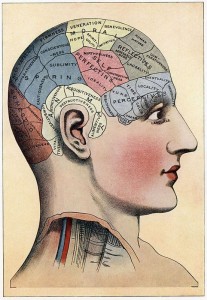Sue is excited to go to the cocktail party. She knows only a few others who will be attending, but she’s confident she’ll find some interesting people to talk to – she always does! Full of energy and confidence, she has a strong sense of connection with her surroundings, be it the physical or social environment. She’s almost always in a good mood.
Gus is also going to the party, though he’s dragging his feet. When he first received the invitation, he felt a spurt of enthusiasm, but it quickly dissipated. That happens a lot, even with things he enjoys, like watching a ballgame. The first few minutes are great, but then things just seem to feel flat. His friends call him “Gloomy Gus”.
Sue and Gus inhabit different ends of the Outlook Dimension according to Dr. Richard Davidson’s book, The Emotional Life of Your Brain. Outlook reflects how long and well we are able to sustain positive emotions. People like Sue, whose positive mood lingers, tend to be Optimistic. Gus, whose moments of joy are fleeting, feels chronically pessimistic and down. He has a lot in common with Eeyore.
What is happening in their respective brains? At the Positive end of the dimension, brain circuits associated with positive emotion stay active for much longer than those who inhabit the negative end. A region in the PFC called the middle prefrontal gyrus (involved in planning and goal-directed behavior) is connected to the nucleus accumbens. Those with Negative outlook show a sharp dropoff in activity between the two areas after experiencing a pleasurable event. It seems the connection from the PFC is faulty, kind of like a wireless internet connection that keeps dropping the signal. The modem keeps pumping out the signal, but the computer fails to connect to the internet.
People at the Negative end of the Outlook spectrum have a lot of difficulty maintaining positive feelings. They’re of the “blink and you’ll miss it” school. As such, they’re at risk for clinical depression or addiction, or both. They have difficulty maintaining motivation, and assume that nothing good will come out of anything, so they risk giving up on love, work and life in general.
It’s also possible to suffer from an excess of Positive Outlook. Those individuals have trouble delaying gratification in order to achieve more distant goals, and may not learn readily from their mistakes. They can have difficulty sizing up situations realistically, leading to unwise decisions. They are also more likely to engage in risky behaviors such as excessive alcohol consumption, binge eating and drug abuse.
Similar to Resilience, our Outlook about trivial events is highly correlated and predictive of our Outlook for momentous ones. If big things make you excited, so will little pleasures. Conversely, if you can’t maintain joy at the thought of small events, life’s big ones, like marriages, births and promotions, will also quickly leave you feeling flat.
What to do?
Shift Left. As noted with Resilience, people with higher activity in their left vs right prefrontal cortex (PFC) have a greater sense of well-being and contentment. They also score higher on something called behavioural activation, or approach motivation. Those with higher activity in their right vs left PFC score higher on behavioural inhibition, or the tendency to shut down in the face of adversity.
To move toward the Positive End of the Outlook Dimension
- Meditation, especially Mindfulness and Compassion
- Regular aerobic exercise and a balanced diet
- Enhance left-PFC Activity
- Get moving – engage in activities to kick-start your left PFC
- Delay gratification. Pause and focus on the more valuable future reward that comes from waiting. This engages the planning part of the PFC to strengthen the connection with the nucleus accumbens. You might
- Buy a brownie at lunchtime, but refrain from eating it until after dinner, rather than sneaking just a little taste now. Distract yourself if necessary.
- Deliberately seek out situations in which an immediate reward presents itself, and resist temptation.
- Pick easy things at first. Go window shopping, but leave your credit cards at home.
- Practice resisting what you’re attracted to, by focusing on the benefits of delaying the purchase (lower prices later, no interest payments from paying with cash, saving for another, perhaps more desirable purchase)
- Focus on different longer-term rewards on different days – monetary, healthy, relationship rewards
- Build up resistance over time
- Do this for about 15 minutes a day, taking the time to visualize the future reward
- Make sure you eventually do reward yourself. Set a time limit for delay and stick to it.
- Keep a gratitude journal. Write down three things that went well every day, and try to mix it up. Look for new things.
- Practice Well Being Therapy (Giovanni Fava, University of Bologna)
- For the next week, three times a day, write down a positive characteristic of yourself and someone with whom you regularly interact. Try to come up with different traits each time.
- Express sincere gratitude regularly. Pay attention to how often you say thank you. Look the person in the eye and summon as much genuine gratitude as you can.
- Compliment others regularly and sincerely.
- Other resources:
To move toward the Negative end of the dimension.
- Envision potentially negative outcomes for a proposed action
- If you’re considering an expensive purchase, say a car, spend time reflecting on the costs of that choice
- Insurance will be more expensive
- You’ll have to be a lot more careful where you park it
- It drops in value so much as soon as you drive it away
- Monthly payments will be higher
- If you’re considering an expensive purchase, say a car, spend time reflecting on the costs of that choice

